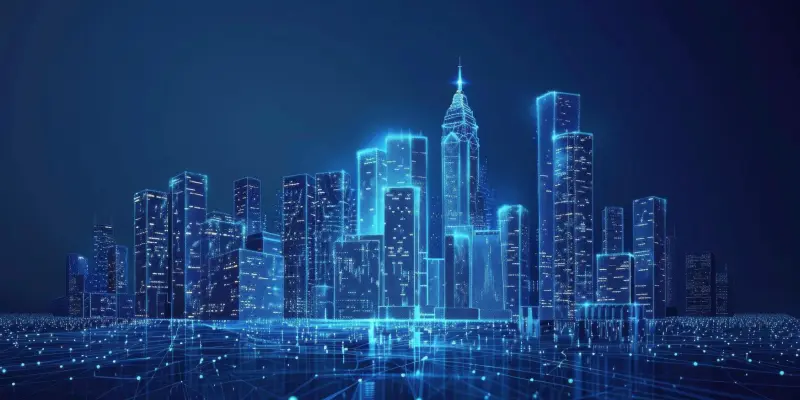Imagine a world where connectivity is virtually instantaneous, paving the way for seamless digital transformations across multiple sectors. With the advent of 5G technology, this vision is set to become a reality as it promises to deliver unprecedented speed, reliability, and low latency. 5G networks are not merely an incremental upgrade over their predecessors; they represent a quantum leap that will fundamentally alter various aspects of daily life and industry. From the dawn of the Internet of Things (IoT) to the evolution of smart cities, the impacts are broad and profound. Unlike the gradual updates from 3G to 4G, 5G introduces a wholly new mobile network architecture where companies like Ericsson are leading the charge with innovative solutions such as open programmable networks.
Impact on Sectors like IoT and Smart Cities
The advent of 5G technology heralds an era where the Internet of Things (IoT) becomes more integrated into our daily lives than ever before. One of the most glaring impacts is the transformation of smart city infrastructure. With enhanced connectivity, cities can efficiently manage traffic systems, public safety networks, and utilities through real-time data analytics. This not only improves the quality of life for residents but also optimizes resource usage and fosters sustainable environments. Remote areas, often left behind in previous technological revolutions, will gain access through non-terrestrial networks, effectively bridging the digital divide and enabling uniform development.
The deployment of 5G is also set to revolutionize virtual and augmented realities, significantly impacting sectors such as entertainment, education, and retail. Imagine a scenario where virtual fitting rooms in retail stores offer consumers a chance to try on clothes in a digitally simulated environment, thereby enhancing the shopping experience. Similarly, educational experiences can become more immersive with virtual classrooms that allow students to engage in practical, hands-on learning without geographical constraints. In the realm of entertainment, expect concerts, games, and interactive experiences that leverage augmented realities to offer audiences a level of engagement previously unimaginable.
Advancements in Healthcare and Manufacturing
Healthcare stands as one of the most promising beneficiaries of 5G technology. The lower latency and higher data speeds promised by 5G make telemedicine and even remote surgeries feasible. Healthcare providers can consult with patients in real-time, irrespective of geographic limitations, thereby making quality healthcare more accessible. Remote surgeries performed through robotic systems can offer specialized medical services to critical areas, potentially saving lives. Data from medical devices can be analyzed instantaneously, providing real-time diagnostics and enabling proactive healthcare solutions that can mitigate illnesses before they become critical.
Similarly, the manufacturing sector is poised for a significant transformation with the integration of 5G networks. With smart manufacturing, real-time monitoring and responsiveness become achievable, allowing factories to automate and optimize their production lines to an unprecedented degree. Enhanced machine-to-machine communication reduces downtime and improves efficiency, leading to higher productivity and reduced operational costs. The advent of 5G also facilitates enhanced safety measures within manufacturing units by enabling real-time monitoring of machinery and environmental conditions, ensuring a safer workplace.
Economic and Political Implications
The deployment of 5G technology extends beyond just economic benefits; it bears considerable political ramifications as well. Countries leading in 5G deployment stand to gain substantial advantages in terms of productivity, innovation, and competitiveness. Nations like China and the United States are already in a race to dominate 5G technology, with significant investments and national strategies aimed at accelerating their leadership. Leading in 5G technology means having the ability to influence global technology standards and policies, giving countries a geopolitical edge.
Europe, in contrast, faces the challenge of staying competitive amidst rapid 5G developments. To not fall behind, European nations need robust strategies and significant investments in 5G infrastructure. Fostering international collaborations and allowing for freer market competition may serve as key elements in bridging the gap between Europe and leading nations. Economically, sectors empowered by 5G are expected to experience significant growth, further cementing the global influence of countries leading in the 5G race. This competitive landscape sets the stage for a new era of economic policies and international relations centered on technological prowess.
Societal Impact and Regulatory Challenges
Imagine a world where connectivity happens almost instantly, setting the stage for smooth digital transformations across various sectors. The arrival of 5G technology is poised to make this vision a reality, promising unmatched speed, reliability, and low latency. Unlike the step-by-step advancements seen in the move from 3G to 4G, 5G signifies a groundbreaking shift that will drastically change everyday life and multiple industries. It will usher in the age of the Internet of Things (IoT) and the development of smart cities, with far-reaching and significant impacts. This isn’t just a minor upgrade; it’s a revolutionary change. Companies like Ericsson are at the forefront of this innovation, introducing pioneering solutions such as open programmable networks that redefine mobile network architecture. The leap to 5G will enable a connected world where virtually anything can communicate with everything else, unlocking new possibilities we’ve yet to fully imagine.

